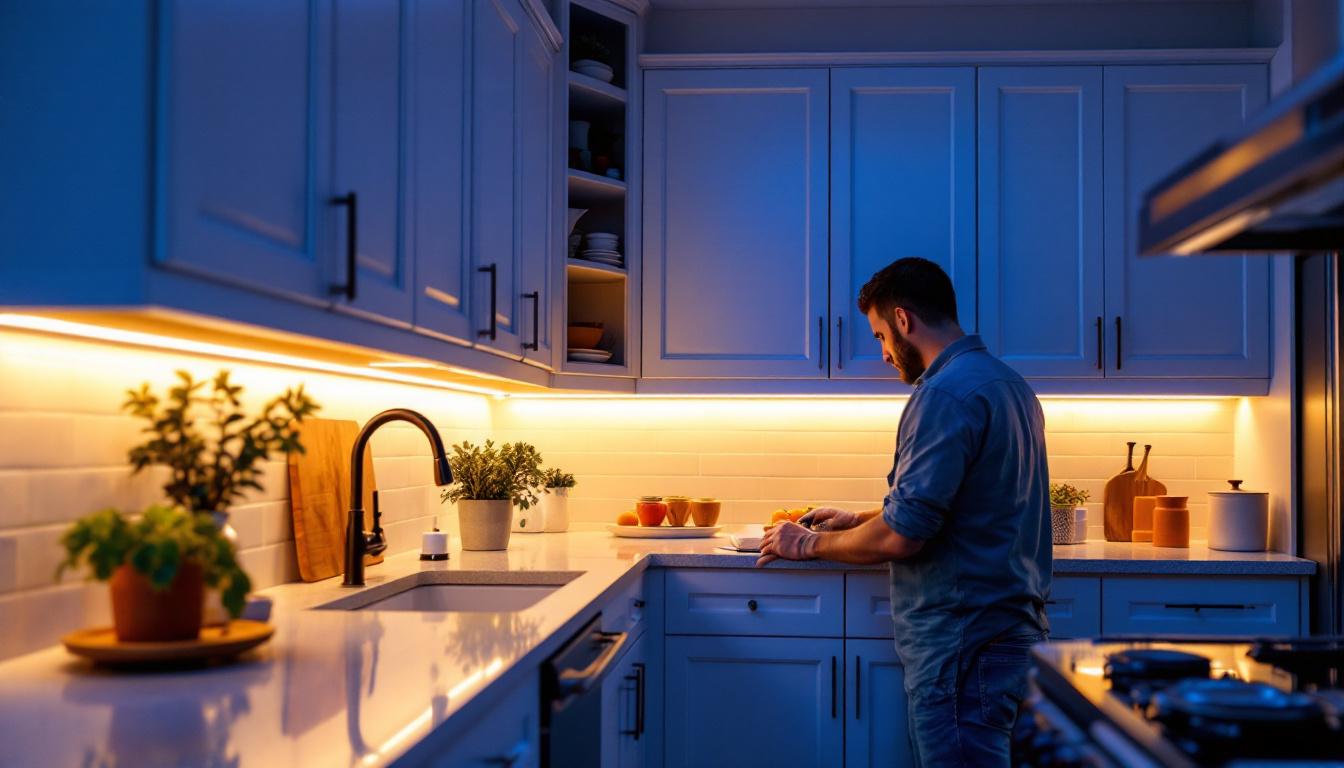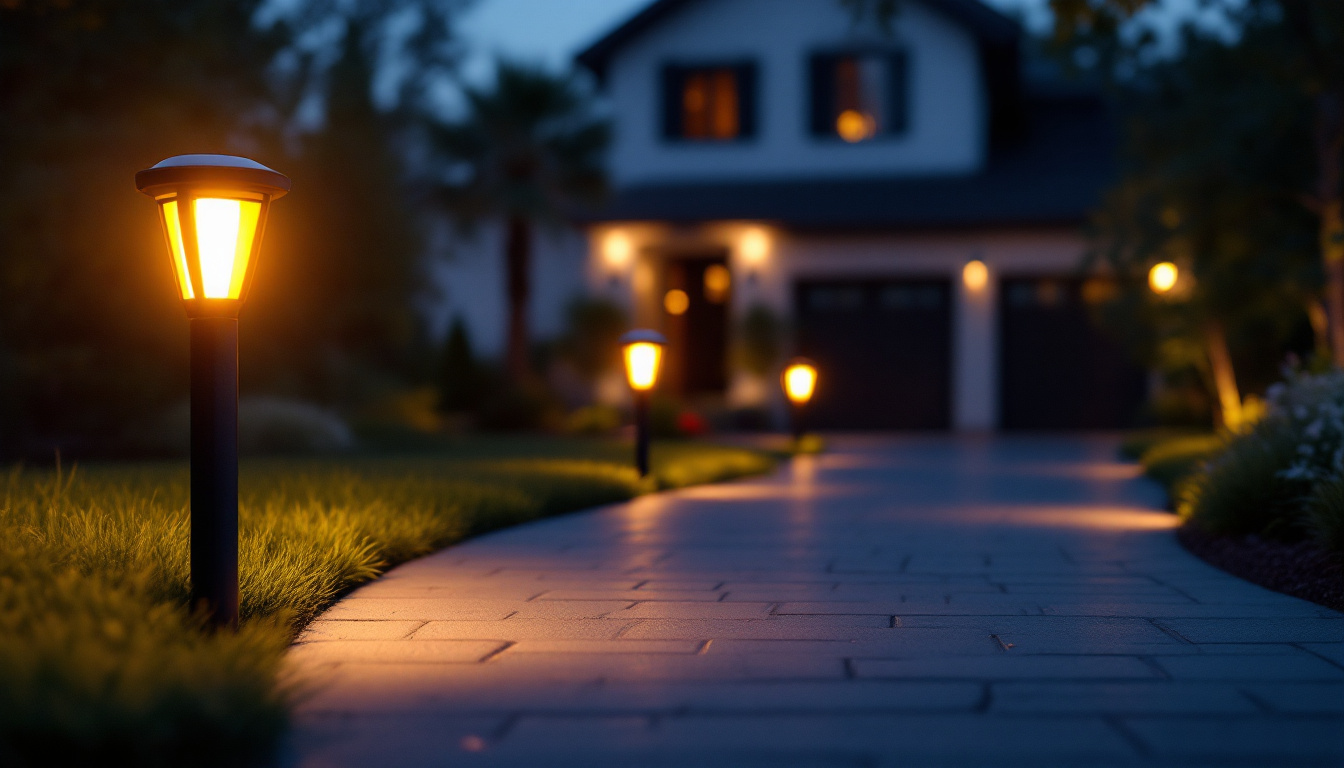
Under cabinet LED lighting has become an essential feature in modern interior design, particularly in kitchens, workspaces, and retail environments. For lighting contractors, mastering this niche means not only delivering aesthetically pleasing results but also ensuring functionality, energy efficiency, and durability. These lights provide targeted illumination that enhances visibility on countertops, reduces shadows, and creates an inviting ambiance. The strategic placement of under cabinet lighting can transform a mundane kitchen into a vibrant cooking space, making food preparation safer and more enjoyable. Additionally, in retail settings, well-placed under cabinet lighting can highlight products, drawing customers’ attention and enhancing their shopping experience.
With LED technology advancing rapidly, under cabinet lighting offers a versatile solution that outperforms traditional fluorescent or incandescent options. Contractors who understand the nuances of LED specifications, installation techniques, and client preferences can significantly elevate their service quality and reputation. Furthermore, the adaptability of LED systems allows for integration with smart home technologies, enabling users to control their lighting through mobile apps or voice commands. This level of customization not only meets the demands of modern consumers but also positions contractors as forward-thinking professionals in the industry.
LEDs are favored for under cabinet applications due to their compact size, low heat output, and exceptional energy efficiency. Unlike traditional bulbs, LEDs can be arranged in strips or puck lights, allowing for seamless integration into cabinetry. Their long lifespan reduces maintenance calls and enhances customer satisfaction. This longevity is particularly beneficial in high-use areas like kitchens, where lights are frequently turned on and off. As a result, homeowners and business owners alike can enjoy significant savings on energy bills and replacement costs over time.
Moreover, LEDs offer a broad spectrum of color temperatures, from warm white to daylight, enabling contractors to tailor lighting to the specific mood and function of the space. The ability to dim LEDs smoothly also adds to their appeal, providing versatility in usage scenarios. For instance, a kitchen can be illuminated brightly during meal prep and then softened for a cozy dinner atmosphere. Additionally, the design flexibility of LED fixtures allows for creative lighting solutions that can enhance architectural features or highlight artwork, making them a popular choice for both residential and commercial projects. This adaptability not only meets the aesthetic desires of clients but also encourages innovative design approaches that can set contractors apart in a competitive market.
Before selecting and installing under cabinet LED lights, contractors must conduct a thorough assessment of the space. This includes measuring cabinet dimensions, evaluating existing electrical infrastructure, and understanding the client’s lighting goals. For instance, a homeowner focused on cooking tasks may prefer brighter, cooler light, while a retail client might want accent lighting to highlight products. Additionally, it’s essential to consider the color scheme of the space; warmer tones can create a cozy atmosphere, while cooler tones can lend a modern, sleek feel.
Contractors should also inquire about any preferences regarding fixture visibility, wiring concealment, and control options such as remote dimmers or smart home integration. This upfront communication ensures the final installation aligns with expectations and minimizes costly adjustments later. Furthermore, understanding the client’s lifestyle can provide insights into their lighting needs. For example, a family that enjoys cooking together may require more versatile lighting options that can adapt to different tasks, while a client who often entertains might prioritize ambient lighting that enhances the overall atmosphere.
Not all LED fixtures are created equal. Lighting contractors must select products that meet quality standards and are suitable for the environment. For example, damp-rated fixtures are necessary for kitchens where moisture is present. Additionally, the choice between LED strips, puck lights, or linear bars depends on the cabinet layout and desired lighting effect. Each type of fixture can produce different light distributions; for instance, LED strips can provide a continuous wash of light, while puck lights can create focused pools of illumination that highlight specific areas.
Accessories such as connectors, mounting brackets, and power supplies should be compatible and reliable. Using high-quality drivers ensures consistent light output and prevents flickering, a common complaint among end-users. Contractors should also consider the ease of future maintenance when selecting fixtures and accessories. It’s beneficial to choose products with replaceable components, as this can save time and money in the long run. Additionally, integrating energy-efficient options can not only reduce the client’s electricity bills but also contribute to a more sustainable environment, which is an increasingly important consideration for many homeowners today.
Proper wiring is critical to the safety and longevity of under cabinet LED lighting. Contractors should adhere to local electrical codes and use appropriate gauge wiring to handle the current load. Concealing wires behind cabinets or inside walls not only improves aesthetics but also protects wiring from damage.
Power supplies must be matched to the total wattage of the LED fixtures. Overloading a driver can cause premature failure or inconsistent lighting. Many contractors prefer low-voltage systems (12V or 24V) for under cabinet lighting due to their safety advantages and compatibility with dimming controls.
Achieving uniform illumination without hotspots or shadows requires careful positioning of LED fixtures. Lighting contractors often use continuous LED strips along the cabinet underside to create even light coverage. When using puck lights, spacing must be calculated to avoid dark gaps.
Mounting the fixtures slightly towards the front edge of the cabinet helps direct light onto the countertop surface rather than the cabinet face. Additionally, diffusers can be installed to soften light output and reduce glare, enhancing visual comfort.
Smart lighting systems have revolutionized how under cabinet LEDs are controlled. Integrating dimmers, motion sensors, or voice-activated controls can add significant value to a lighting installation. For example, motion-activated under cabinet lights provide hands-free convenience in kitchens or workspaces.
Lighting contractors should stay updated on the latest smart home platforms and compatible LED drivers. Offering clients the option to control lighting via smartphone apps or voice assistants can differentiate a contractor’s services and appeal to tech-savvy customers.
Color rendering index (CRI) is a crucial factor that affects how colors appear under LED lighting. High CRI LEDs (above 90) are preferred in kitchens and retail spaces where accurate color perception is important. For instance, food preparation areas benefit from lighting that reveals true food colors, enhancing safety and presentation.
Selecting the appropriate color temperature also influences the ambiance. Warm white (2700K–3000K) creates a cozy atmosphere, while neutral to cool white (3500K–5000K) supports task-oriented environments. Contractors should guide clients in making choices that complement their décor and usage needs.
Although LEDs produce less heat than traditional bulbs, inadequate heat dissipation can still shorten their lifespan. Lighting contractors must ensure fixtures are installed with sufficient airflow or heat sinks, especially in enclosed cabinetry.
Using aluminum channels or mounting profiles specifically designed for LED strips can help manage heat effectively. This preventative step reduces the risk of premature LED failure and maintains consistent light quality over time.
Flickering is a common issue that can arise from incompatible dimmers or poor-quality drivers. Contractors should test all components together before final installation to ensure smooth dimming performance. Using LED-specific dimmers and certified power supplies minimizes flicker and electrical noise.
Additionally, careful separation of LED wiring from high-voltage lines reduces electromagnetic interference, which can cause flickering or buzzing sounds. Proper grounding and shielding techniques contribute to a stable lighting system.
Regular maintenance extends the life of under cabinet LED systems. Contractors should advise clients to periodically inspect fixtures for dust buildup, loose connections, or discoloration. Cleaning LED covers with a soft cloth and mild detergent preserves light output and appearance.
Scheduling follow-up visits or providing maintenance guides can enhance client relationships and encourage repeat business. Proactive service prevents small issues from escalating into costly repairs.
Many clients seek to upgrade older under cabinet lighting systems to LED for better efficiency and aesthetics. Lighting contractors skilled in retrofit projects can remove outdated fixtures and install modern LED solutions with minimal disruption.
Retrofitting may involve upgrading wiring, adding dimming controls, or improving fixture placement. Offering these services positions contractors as experts capable of modernizing any space while maximizing energy savings.
Under cabinet LED lighting represents a specialized yet highly rewarding area for lighting contractors. By understanding the technical aspects, client needs, and installation best practices, contractors can deliver superior lighting solutions that enhance both form and function.
Staying informed about the latest LED technologies, smart control integrations, and maintenance strategies ensures that contractors remain competitive and trusted in their field. Ultimately, mastering under cabinet LED lighting not only improves project outcomes but also elevates the contractor’s professional reputation in a growing market.
Ready to elevate your lighting projects with the finest under cabinet LED solutions? Look no further than LumenWholesale, where we specialize in providing contractors with high-quality, specification-grade lighting products at unbeatable wholesale prices. Say goodbye to local distributor markups and hello to a vast selection of reliable, high-performance lighting that meets the highest industry standards. With the added convenience of bulk buying and free shipping, you can ensure your projects shine without breaking the bank. Don’t compromise on quality or value—visit LumenWholesale today and discover the perfect blend of quality, affordability, and convenience for all your lighting needs.

Discover how solar-powered driveway markers are revolutionizing lighting installations by enhancing profitability and sustainability.
Discover the common pitfalls lighting contractors face with vintage LED light bulbs and learn how to avoid them.

Discover the key differences between fluorescent and LED lighting in this insightful article.

Discover essential insights into various light bulb types with our comprehensive guide tailored for lighting contractors.